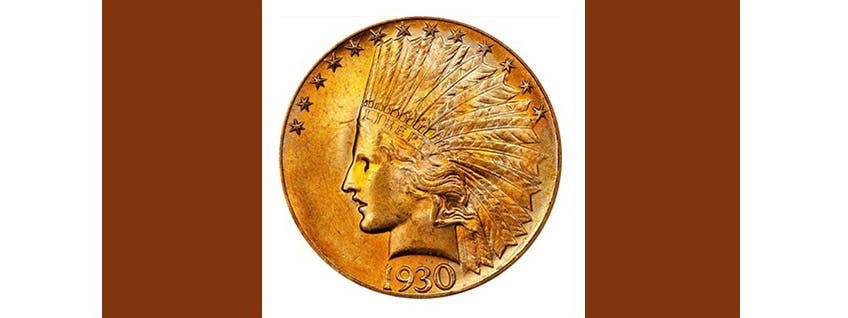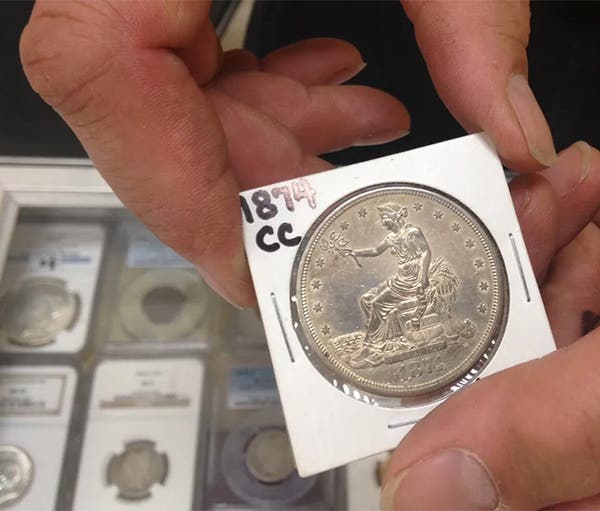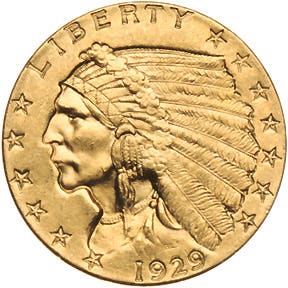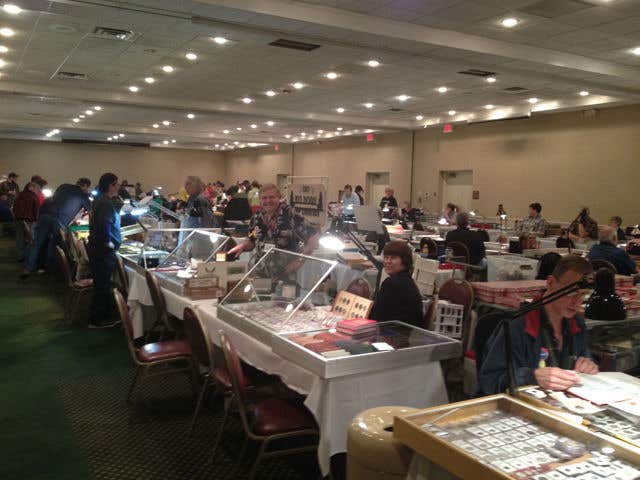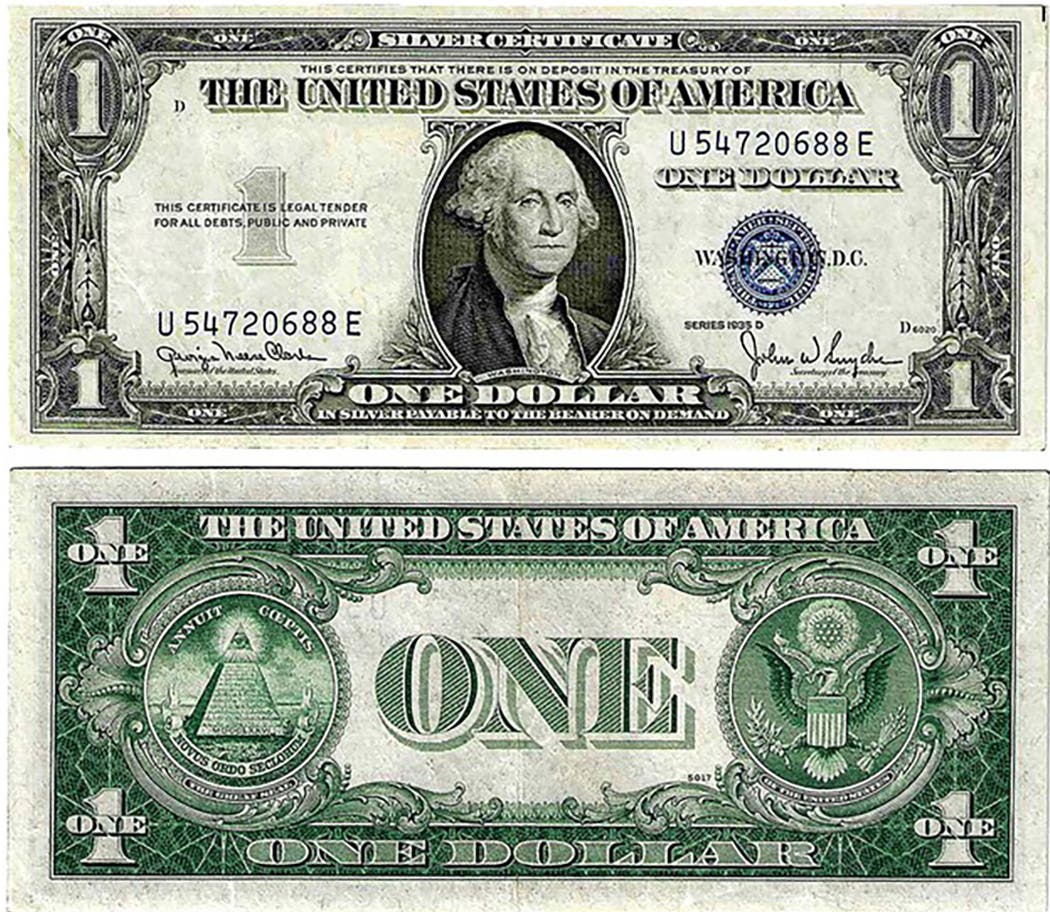Non-Collecting Public’s Influence on Coin Scarcity
There are plenty of examples of the great mass of non-collectors influencing the preservation of certain coins. Probably the first in U.S. history was the early 18th-century copper cent.
The topic of what makes a coin snatched from circulation scarcer than others, and the impact of public hoarding, was broached by Ray Young in “The Squirrel Instinct: Why Some Rarities Are Common and Some Commoners Are Rare” in the June 1965 issue of Coins magazine. Young explores some of the dates that, during his day, were considered scarce. The high price of silver in later years meant the disappearance of all silver coins from circulation well beyond any thought of low mintages. Therefore, some of the dates mentioned by Young may have been scarce in circulation at the time this article was written, but today, they carry little or no premium over their counterparts. Still, the “how and why” of some coins disappearing from circulation quicker than others during that period of regular pocket-change checking is worth noting.
“Sooner or later, almost every collector wonders why some coins, minted in large quantities, are scarce,” Young wrote. “On the other hand, why are some pieces common, although not too many were made? In many cases, the answer is found in a curious bit of human nature as it applies to numismatics.
“If the general public hears or suspects that a particular coin is scarce, it hoards enough of these pieces to preserve them for collectors far into the future. But if the public takes a coin for granted or feels it is common, then the coin stays in circulation, wears out, disappears, and becomes truly scarce.
“There are plenty of examples where the great mass of non-collectors has influenced the preservation of certain coins. Probably the first in U.S. history was the early 18th-century copper cent.
“When the treasury stopped minting the pieces in 1857, and for some years thereafter, many people began to acquire a set, or at least a few specimens, while there was a supply. It’s interesting to note that the mint withdrew a far larger proportion of the old nickel cents [than] the earlier copper variety, largely due to this public interest. While the price of the copper cent has increased with the current coin boom, there is still a plentiful supply in existence for anyone with the money to spend.
“One of the things almost everyone looks at is his pocket change. This fascination seems to be the chief reason why the ‘centless’ nickel of 1883 is far more common than the variety with ‘cents’ under the V on the reverse.
“When the type first appeared, a great many people thought it was an error. For quite a few years after 1883, while the supply of nickels bearing the ‘cents’ increased daily, the first version was looked on as a curiosity. The natural result was that folks tended to hang on to it.
“The 1883 ‘cents’ variety, attracting no such attention since it looked like most other Liberty heads, was allowed to remain in circulation. The natural consequence was that it wore out. Today, although there were 16 million nickels made in 1883 with ‘cents’ and only a third as many without, the smaller issue is common, and the larger commands a price 10 times as great. The fact that the centless type was occasionally gold plated to pass as a five-dollar coin added to the piece’s notoriety.
“The same sort of thing kept the 1909 Lincoln cent common for years. When the Lincoln first appeared, it was a novelty. The public did the same thing it does whenever the design of a coin changes; it preserved millions as specimens, which later trickled back into circulation. On the other hand, by 1910, the novelty had started to wear off. This meant that some dates, although made in fairly large numbers, were regarded simply as common cents and allowed to go the way of most coins.
“Many collectors of Washington quarters have noticed that the 1932-P turns up fairly often, while later issues, and in much larger quantities, are really hard to find. Why should this be?
“In 1932, the Washington piece got a reception which to some extent foreshadowed that given the Kennedy half. The coin was struck in the same year the U.S. was celebrating the 200th anniversary of Washington’s birth. Since many people thought the coin was a one-shot commemorative, they kept all they found.
“Sooner or later, when the holders of the coins found there was no premium, the 1932s began to trickle back into circulation. Meanwhile, the later dates, which had received no such publicity, had been ignored. This resulted in such situations as 1932 being fairly common with a five million coinage [5,404,0000] while the 1936-D, struck in slightly [lower] quantities [5,374,000], became worth quite a bit more.
“The Jefferson Nickel series gives some examples of what happens when the public ignores a large issue.
“For years, in fact until 1962, the 1943-P five-cent piece represented the all-time high in nickel production. Over 271 million were struck. The 1942-P ‘silver’ issue totaled almost 58 million pieces, a reasonably large coinage in those days.
“Because there was no premium value on larger issues, they were ignored. The collector who had a brilliant uncirculated specimen didn’t bother to get more, although he would acquire and hold on to as many other ‘scarce’ dates or varieties as he could. The result was that the 1942-P and 1943-P abounded in circulation, but choice specimens were allowed to escape preservation.
“Two nickels from the Denver mint, struck within a year of each other, provide a good example of what happens when the public favors one coin and ignores another.
‘In early 1942, Denver struck almost 14,000,000 five-cent coins of the old prewar nickel alloy. Coinage stopped before the middle of the year. Fairly soon, these coins had a premium value assigned to them. This led collectors and the general public to save 1942-D nickels.
“The following year, Denver struck slightly more than 15,000,000 silver-copper-manganese five-cent pieces. During the heyday of the wartime nickel, this was the current coin. No premium value was assigned to the 1943-D. In fact, not until many years afterward did people realize how scarce the coin was. Many of the 1943-D pieces were allowed to remain in circulation, often by the same people who would hang on to any 1942-D they found, regardless of condition. A natural consequence is that the 1943-D, the smallest wartime nickel coinage, is truly scarce.
“The same seems true of the 1942 nickel (no mint mark) and the 1942-P silver five-cent coin. When the change in alloy took place in the autumn of 1942, there was a tendency to ‘hang on to the prewar type while they’re still around’ and let the new type stay in circulation.
“As a general rule, collectors tended to ignore the most common wartime nickels. In 1963, the press began to enlighten the general public (all the non-collectors) about the ‘silver nickel’ and the fact that two contained more silver than one dime. This led to a large-scale hoarding of the coins and a renewed interest in them on the part of the numismatic portion of the populace.
“The chief result of the earlier ignoring of the coins was a reduction in the number available in fine or better condition. There still are plenty of wartime nickels around, but 20 years of circulation has had its effect on virtually all of them. The general tendency in the past seems to have been to acquire a few choice specimens and ignore all the others.
“As a general rule, when the public begins to withdraw a coin from circulation, it ensures that specimens in better grades of conditions will be relatively common. In the case of the wartime nickel, however, withdrawal didn’t start until time had rubbed its harsh hand across the issue.
“Another factor that influences the supply of coins, independently of the number struck, is the public and collector desire to get coins from the final year of issue. The last year may be no more unique than any other year, except for the date, but that’s irrelevant. If a coin has ‘last year of issue’ applicable to it, it tends to be hoarded. Thus, many 1958 cents are gone from circulation since this was the final year of the ‘wheat ears’ type reverse. In the case of the Franklin half, we have this same behavior working to ensure that 1963-D pieces won’t be worth much. This was the all-time high coinage for the design, and a disproportionately high percentage of the issue is being hoarded ...
“Some coins are preserved because of folklore that springs up about them, and the 1937-D nickel seems to fall in that category. A few coins were stuck, and the buffalo was missing a leg. The word spread among the general public that the whole issue contained an error. Eventually, the coins that were saved (that is, the common, perfect variety) tended to drift back into circulation, with the result that a 1937-D still could be picked up from circulation despite a relatively small coinage.
“Such distortions of fact are fairly common. When the Lincoln Memorial coin appeared in 1959, someone noticed that the ‘of’ in the United States of America seemed to contain a small O and capital F. This started the report that the type was an error, and the result was hoarding.
“Actually, anyone who had ever looked closely at a Franklin half would have seen the same thing there.
“Another similar story is that only 500,000 1955 Philadelphia cents were made. Actually, Philadelphia struck over 330 million that year. The yarn seems to have started because of confusion with the famous ‘doubled strike’ of that year. Whatever the cause, the result has been that many people acquire gallon jugs full of 1955 cents.
“Eventually the day will come when the jug-fillers try to sell their hoards, and then, in disgust, resort to spending their common circulated 1955s. This will have a natural result: People will wonder in 1999 why there are so many 1955 cents in circulation when only 330,000,000 were made.”
You may also like:


